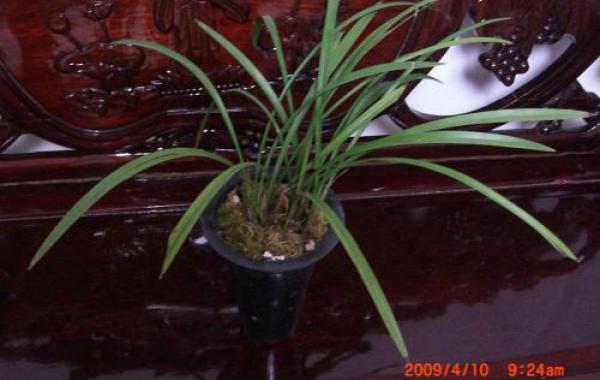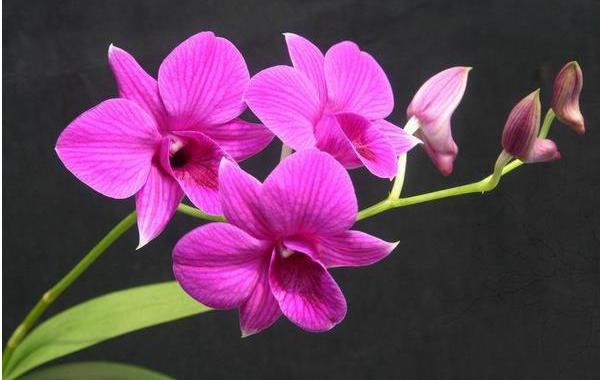How to rejuvenate the sick orchid?

How to rejuvenate a sick orchid.
Technical guidance for the rejuvenation of sick orchids:
I. strict disinfection
Remove the orchid seedlings from the original pot, discard the original soil, and wash the roots carefully. Cut off the residual root, withered root and rotten root with burning sterilized scissors, then soak it in 0.5% methyl topiramate or potassium permanganate solution for 5-10 minutes, drain and dry it repeatedly for two to three times to completely kill the pathogen. Pay attention to soak the root disinfection to just be able to immerse the false bulb for the degree, do not make the center of the leaf stagnant water. At the same time, the above solution can be diluted 5 times and then spray disinfect the leaves.
Second, change the bowl
Tile pot and purple sand basin are the first choice for planting and curing sick orchids. It is best to switch to an unused new basin, because there must be some fungi and bacteria that cause orchid diseases in the old basin. If you want to use the old basin, it is safer to clean it and expose it to the sun for several days or pour it with boiling water. The pelvic floor should use a basin pad and be ventilated through water. Special hydrophobic cover can be purchased, and natural materials such as peach kernel and walnut shell can also be used. The height of the cushion basin should account for the height of the basin, and the volume of the basin should be small rather than large. The root system of sick and weak orchid is relatively fragile, if the basin is too large, it is easy to cause stagnant water and lead to orchid root rot. This problem can be avoided by using a small basin.
Third, select the matrix.
The adaptability of diseased weak orchid seedlings is poor, and the cultivation substrate should be the granular substrate with medium fertility, low fat content and good ventilation and permeability, such as ceramsite, foaming stone, coarse sand, broken brick, Emei fairy soil, crushed stone and so on. The roots and false bulbs of the orchid plant can also be wrapped in water moss and then planted in the basin with the above-mentioned matrix, and the effect is also good. All substrates need to be sterilized before use. It is not suitable to use humus soil to plant diseased weak orchid seedlings. First, humus soil is collected from the forest, and there are many miscellaneous bacteria, so it is difficult to sterilize thoroughly. Second, humus soil is easy to harden after being used for a period of time, and its permeability is poor, which is not good for the growth of orchid root.
Fourth, regulate and control temperature and humidity
Plant diseased orchid seedlings a little deeper to protect the false bulbs and keep them moist. The matrix in the basin should be kept in a moist state, and too much or too little moisture is not conducive to the rejuvenation of orchid seedlings. Hibernating period can appropriately increase the matrix, usually to cover the false bulb, in order to keep the pseudobulb moist and play an antifreeze effect. When the temperature is higher than 15 ℃ in the next spring, the substrate increased in the previous winter should be subtracted in time to facilitate the germination of new buds. The usual temperature should be kept at 18-28 ℃.
Orchid seedlings should be kept in a place where scattered light can be seen to avoid direct light. Some basins and sinks can be added around the orchid basin to increase the humidity of the environment.
I. strict disinfection
Remove the orchid seedlings from the original pot, discard the original soil, and wash the roots carefully. Cut off the residual root, withered root and rotten root with burning sterilized scissors, then soak it in 0.5% methyl topiramate or potassium permanganate solution for 5-10 minutes, drain and dry it repeatedly for two to three times to completely kill the pathogen. Pay attention to soak the root disinfection to just be able to immerse the false bulb for the degree, do not make the center of the leaf stagnant water. At the same time, the above solution can be diluted 5 times and then spray disinfect the leaves.
Second, change the bowl
Tile pot and purple sand basin are the first choice for planting and curing sick orchids. It is best to switch to an unused new basin, because there must be some fungi and bacteria that cause orchid diseases in the old basin. If you want to use the old basin, it is safer to clean it and expose it to the sun for several days or pour it with boiling water. The pelvic floor should use a basin pad and be ventilated through water. Special hydrophobic cover can be purchased, and natural materials such as peach kernel and walnut shell can also be used. The height of the cushion basin should account for the height of the basin, and the volume of the basin should be small rather than large. The root system of sick and weak orchid is relatively fragile, if the basin is too large, it is easy to cause stagnant water and lead to orchid root rot. This problem can be avoided by using a small basin.
Third, select the matrix.
The adaptability of diseased weak orchid seedlings is poor, and the cultivation substrate should be the granular substrate with medium fertility, low fat content and good ventilation and permeability, such as ceramsite, foaming stone, coarse sand, broken brick, Emei fairy soil, crushed stone and so on. The roots and false bulbs of the orchid plant can also be wrapped in water moss and then planted in the basin with the above-mentioned matrix, and the effect is also good. All substrates need to be sterilized before use. It is not suitable to use humus soil to plant diseased weak orchid seedlings. First, humus soil is collected from the forest, and there are many miscellaneous bacteria, so it is difficult to sterilize thoroughly. Second, humus soil is easy to harden after being used for a period of time, and its permeability is poor, which is not good for the growth of orchid root.
Fourth, regulate and control temperature and humidity
Plant diseased orchid seedlings a little deeper to protect the false bulbs and keep them moist. The matrix in the basin should be kept in a moist state, and too much or too little moisture is not conducive to the rejuvenation of orchid seedlings. Hibernating period can appropriately increase the matrix, usually to cover the false bulb, in order to keep the pseudobulb moist and play an antifreeze effect. When the temperature is higher than 15 ℃ in the next spring, the substrate increased in the previous winter should be subtracted in time to facilitate the germination of new buds. The usual temperature should be kept at 18-28 ℃. Orchid seedlings should be kept in a place where scattered light can be seen to avoid direct light. Some basins and sinks can be added around the orchid basin to increase the humidity of the environment.
- Prev

How to raise Dendrobium orchid, Dendrobium orchid culture methods and matters needing attention
How to raise Dendrobium orchid, Dendrobium orchid culture methods and matters needing attention
- Next

Symptoms, incidence regularity and control methods of orchid leaf spot
Symptoms, incidence regularity and control methods of orchid leaf spot
Related
- Is the orchid suitable for indoor use? Is it good for the body?
- How to prevent the empty root of orchids?
- What to do after the crab claw orchid is withered?
- Why are the leaves of orchids always yellow? Fertilizing and watering.
- Can the root of the gentleman orchid be saved if it is rotten?
- Diagnosis and treatment of cotton-blowing beetle insects in Cymbidium
- There is a way for a gentleman's orchid to rot.
- What is the most suitable temperature and humidity for the orchid?
- How to raise a gentleman's orchid? Cultivation techniques of Cymbidium
- How to prepare the nutritive soil for the cultivation of Cymbidium

